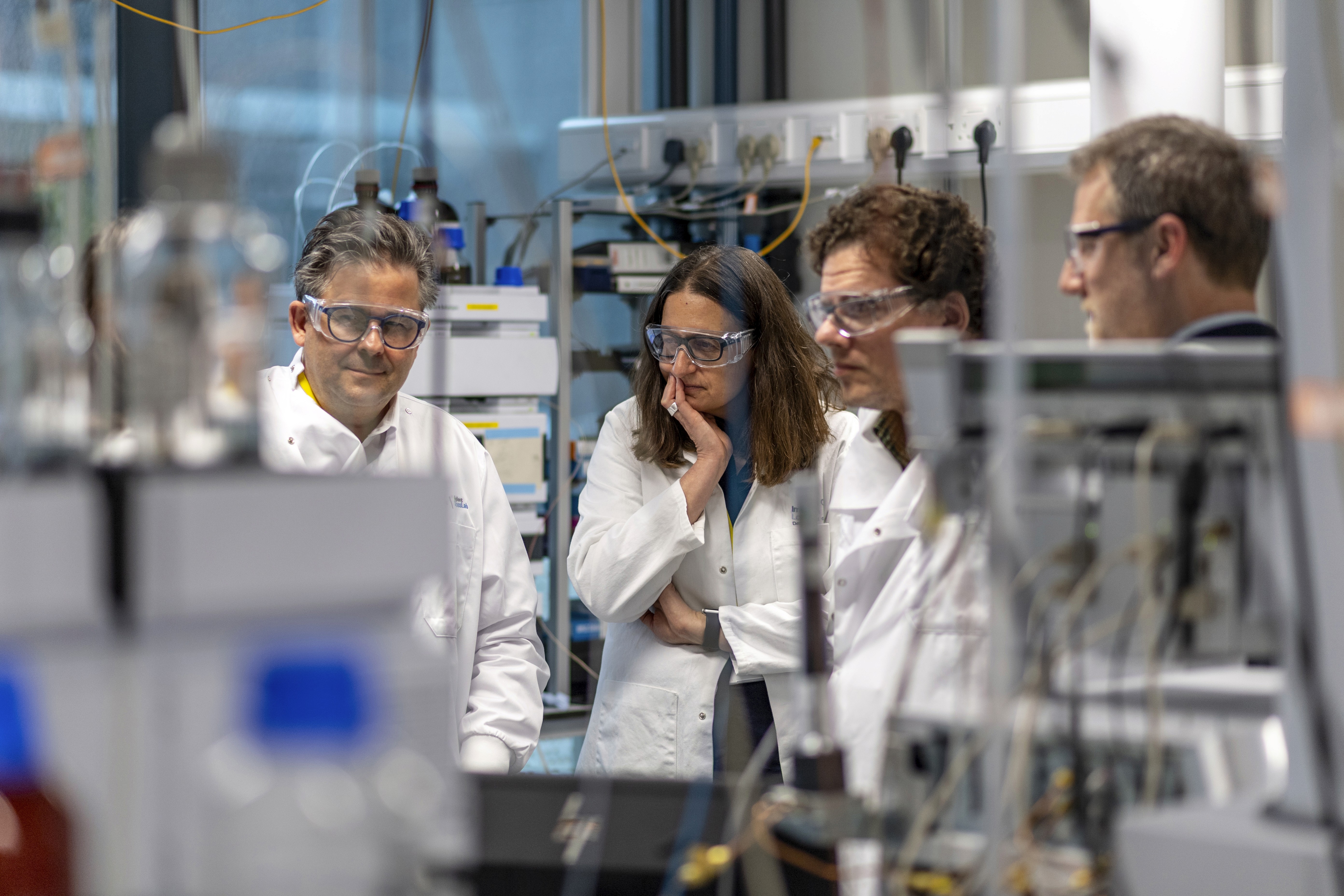The Microbe That Speaks a New Genetic Language
Scientists at Yale have engineered a bacterium with a rewritten genetic code, unlocking new possibilities for synthetic proteins with programmable functions
Feb 6, 2025
[DALL-E]
In a landmark experiment, researchers engineered a strain of Escherichia coli with a radically simplified genetic code, compressing what was once a set of three redundant stop signals into a single, streamlined command. This recoded bacterium—nicknamed “Ochre”—has opened up an entirely new realm of biological possibility. With its genetic architecture freed from redundancy, the microbe can now weave synthetic amino acids into its proteins, crafting molecular tools that evolution never had the chance to invent.

Published in recetnly in Nature on February 5, the research represents a quantum leap in our ability to program cells at the molecular level. “This research allows us to ask fundamental questions about the malleability of genetic codes,” said Farren Isaacs, a synthetic biologist at Yale and co-senior author of the study. “It also demonstrates the ability to engineer the genetic code to endow multi-functionality into proteins and usher in a new era of programmable biotherapeutics and biomaterials.”
Life’s Language, Rewritten
Every living thing on Earth follows the same basic genetic script, written in sequences of three-letter words called codons. These codons instruct cells on how to stitch together amino acids into proteins, the molecular machines that carry out life’s essential tasks. For reasons buried deep in evolutionary history, the genetic code contains a fair bit of redundancy—multiple codons can stand in for the same amino acid, and three different codons serve the singular purpose of telling the cell when to stop protein production.
But what if that excess coding space could be repurposed?
Isaacs and his colleagues saw an opportunity to do just that. By eliminating two of the three natural stop codons, they created a microbe whose genetic script had been streamlined. This freed up genetic real estate, allowing the scientists to rewrite the code with new meanings. Instead of simply halting protein production, some of these codons were reassigned to incorporate synthetic amino acids—molecular structures not found in nature.
"A lot of these words are equivalent, or synonymous," said Michael Grome, a postdoctoral researcher at Yale and first author of the study. "We set out to add more ingredients for building proteins, so we took three of these words for ‘stop’ and made them one. Two words were removed, then we re-engineered the cell so they were freed for new function. We then engineered a cell that recognized the word to say something new, to represent a new ingredient.”
In essence, the researchers didn’t just edit genes—they reprogrammed life’s dictionary.
A Thousand Edits, A World of Possibilities
Recoding an entire bacterial genome is no small feat. The team had to make more than 1,000 precise edits, altering sequences at a scale never before attempted. Jesse Rinehart, a molecular physiologist at Yale and co-senior author of the study, called the project a “profound piece of whole-genome engineering.”
“This is an exciting new platform technology that opens up an array of applications for biotechnology, both in the academic realm and in the commercial sector,” Rinehart said. “We want to advance our general knowledge of science, but we also want to enable industrial applications that are beneficial to society.”
With the ability to incorporate nonstandard amino acids, the newly engineered E. coli can now produce proteins with properties unlike anything evolution has shaped. Some could be designed to resist degradation, making protein-based drugs last longer in the body. Others could be tailored for biomaterials with unusual mechanical or electrical properties.
From Biology to Bioengineering
The implications of this work extend far beyond the laboratory. Isaacs and Rinehart have been exploring ways to turn their genomic rewriting into real-world applications, acting as advisors to Pear Bio, a biotech startup that has licensed the technology for commercial use.
One of the most promising applications involves engineering protein drugs with synthetic chemistries, making them more stable or less likely to provoke an immune response. In a 2022 study, the Yale team demonstrated how first-generation genomically recoded organisms could be used to fine-tune the half-life of protein-based drugs, offering a way to extend the effectiveness of therapeutics without increasing dosage.
With the Ochre cell, those capabilities have expanded even further. The researchers now have the ability to encode multiple nonstandard amino acids into a single protein, opening the door to entirely new kinds of programmable biologics.
“This is just the beginning,” Isaacs said. “We now have the ability to fundamentally reprogram the building blocks of life, and that opens the door to applications we’ve only begun to imagine.”
A Future Shaped by Synthetic Biology
For most of human history, the rules of life’s genetic code have been a given, an immutable law governing all living things. But as scientists gain the ability to rewrite these rules, life itself may become programmable in ways that once seemed like science fiction.
With projects like the Ochre cell, researchers are pushing the boundaries of what biology can do—not just as a natural force, but as a designed system. The alphabet of life has not changed in billions of years. Now, for the first time, scientists have edited the dictionary. And the story of synthetic biology is only beginning.


















